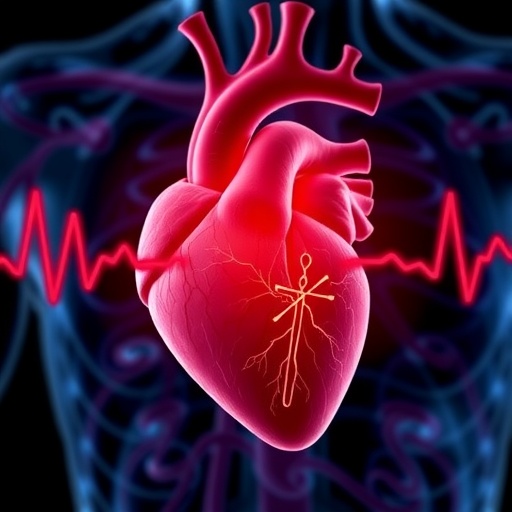Arrhythmias and heart failure (HF) are significant contributors to global health challenges, leading to substantial morbidity and mortality rates. Among patients diagnosed with both conditions, there exists a notable correlation with severe health outcomes, highlighting an urgent need for improved understanding and management strategies. One such manifestation of this interplay is arrhythmia-induced cardiomyopathy (AIC), which is characterized primarily by the influence of arrhythmias, predominantly atrial fibrillation (AF), on the decline of cardiac function.
AIC represents a complex phenomenon where persistent and repetitive arrhythmias, such as AF, can instigate or exacerbate the development of heart failure. This condition poses unique diagnostic challenges; it becomes increasingly difficult for clinicians to ascertain whether the underlying heart failure is the precursor of the arrhythmias or if the arrhythmias themselves are precipitating the heart failure. This juxtaposition underscores the necessity for a refined diagnostic process to better identify and manage AIC, which remains under-recognized in clinical practices.
Central to AIC is the observation that patients often experience a remarkable recovery in left ventricular systolic function upon the restoration of normal sinus rhythm, further complicating the diagnostic landscape. The process of understanding the reversibility of functional decline following rhythm control interventions provides critical insights into the pathophysiological mechanisms at play. This reversibility not only points to the crucial relationship between arrhythmias and heart function but also emphasizes the need for timely and effective management strategies for those affected.
The myriad of pathophysiological mechanisms implicated in AIC calls for a comprehensive exploration, particularly focusing on atrial fibrillation as the primary arrhythmia of concern. The contribution of AF to left ventricular dysfunction cannot be overstated, as the presence of rapid ventricular rates or loss of atrial contraction can dramatically impair hemodynamic stability. This impairment can lead to a vicious cycle of further cardiac deterioration, thereby exacerbating both heart failure symptoms and the frequency of arrhythmias.
Understanding the epidemiology surrounding AIC reveals a concerning trend: the increasing prevalence of AF and its associated cardiovascular complications among patients with heart failure. The data indicates a growing incidence of both conditions in aging populations, thereby necessitating proactive measures for assessment and management. Given the high morbidity and mortality associated with concurrent HF and AF, healthcare providers must prioritize screening for AIC among those with established diagnoses of either condition.
A precise clinical presentation of AIC can vary, presenting a unique challenge in the clinical management of affected individuals. Patients may exhibit symptoms of heart failure, such as dyspnea, fatigue, and edema, while simultaneously showing signs of arrhythmia. The difficulty in distinguishing these overlapping symptoms can lead to misdiagnosis and inadequate treatment. This highlights the essential role of comprehensive and systematic assessment strategies that can facilitate accurate diagnosis and timely intervention.
In the clinical assessment of patients suspected of AIC, a multifaceted approach is critical. Clinicians must employ a combination of clinical evaluation, imaging studies, and electrophysiological assessments to elucidate the interplay between arrhythmia and left ventricular dysfunction. Advanced echocardiography, for instance, can help delineate structural changes in the myocardium, while electrocardiographic monitoring can provide insights into the nature and frequency of arrhythmias.
Therapeutic strategies aimed at addressing AIC must inherently include efforts to restore sinus rhythm. Implementing rhythm control interventions, such as catheter ablation or pharmacological therapies, can significantly impact cardiac function and improve quality of life for patients. In parallel, it is paramount to deliver effective heart failure management by optimizing guideline-directed medical therapy. This dual approach not only aims to suppress arrhythmias but also tackles the underlying heart failure, ultimately improving patient outcomes.
As we delve deeper into the complexities of AIC, it becomes evident that future research directions must focus on establishing objective, measurable parameters for diagnosis and monitoring. The realization that effective identification of AIC hinges on quantifiable metrics signifies an emerging area of investigation. Such parameters could include novel biomarkers, advanced imaging techniques, and digital health solutions, which would complement traditional clinical evaluations.
The pressing need for enhanced awareness and education regarding AIC among clinicians and patients alike cannot be overlooked. As knowledge surrounding AIC continues to evolve, the urgency to disseminate this information becomes paramount. Initiatives aimed at educating healthcare professionals about the critical nature of arrhythmias in the context of heart failure will foster better recognition and management of this condition.
Lastly, the journey toward improving outcomes for patients with AIC will undoubtedly benefit from collaborative research efforts. Multi-disciplinary approaches that unite cardiologists, electrophysiologists, heart failure specialists, and researchers can pave the way for breakthroughs in understanding the underlying mechanisms, identifying at-risk populations, and developing innovative therapeutic strategies.
In conclusion, arrhythmia-induced cardiomyopathy denotes a significant intersection of arrhythmias and heart failure that necessitates focused research and clinical attention. The complex dynamics between AF and left ventricular dysfunction pose considerable challenges; however, with concerted efforts in research, education, and clinical practice, there lies a potential to significantly enhance patient outcomes and quality of life for those grappling with this daunting condition.
Subject of Research: Arrhythmia-induced cardiomyopathy with a focus on atrial fibrillation.
Article Title: Arrhythmia-induced cardiomyopathy: focus on atrial fibrillation.
Article References:
Fabritz, L., Hatem, S.N. & Sossalla, S. Arrhythmia-induced cardiomyopathy: focus on atrial fibrillation.
Nat Rev Cardiol (2025). https://doi.org/10.1038/s41569-025-01195-2
Image Credits: AI Generated
DOI: 10.1038/s41569-025-01195-2
Keywords: Arrhythmia, heart failure, atrial fibrillation, cardiomyopathy, left ventricular dysfunction, rhythm control, electrophysiology, clinical assessment, emerging research.




